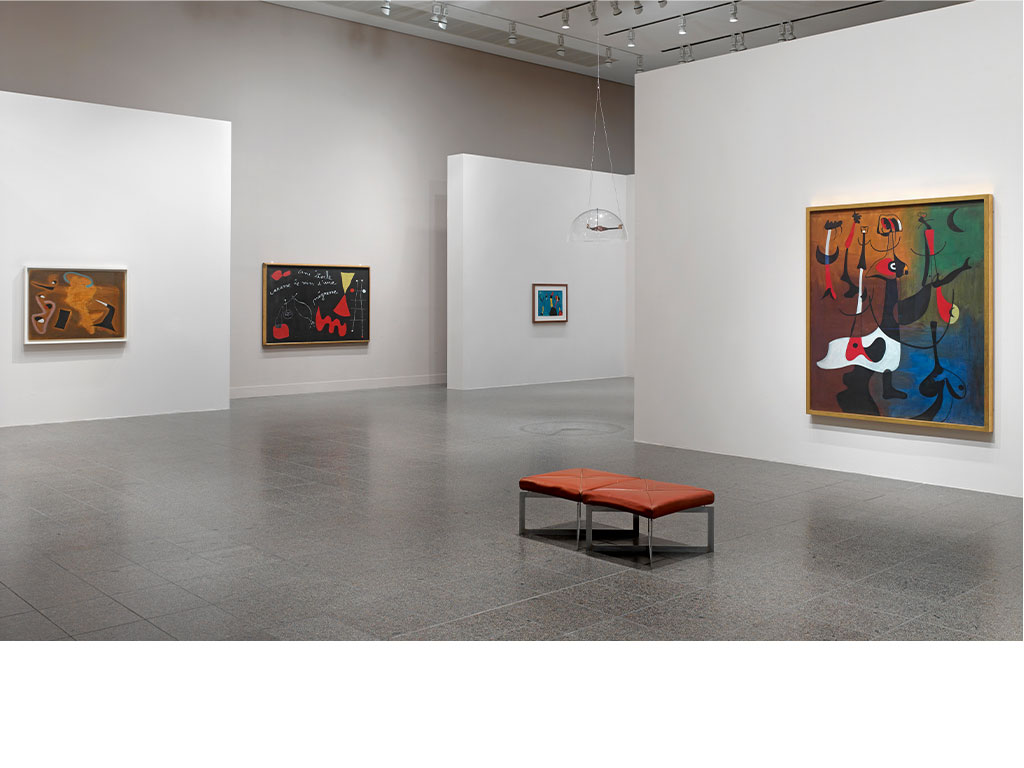With his outwardly cheerful, naïve motifs, the Spanish painter Joan Miró (1893-1983) is a familiar figure worldwide. Populating his pictures are dancing stars and fanciful symbols of every kind. Now, the Kunstsammlung Nordrhein-Westfalen in Düsseldorf invites art-lovers to rediscover this popular artist: Miró. Painting as Poetry is a wide ranging exhibition that seeks – for the first time – to illuminate the intimate interplay between the Spaniard’s art and the avant-garde literature of his generation. Approximately 110 paintings, drawings, and artist’s books from all phases of Miró‘s career will be on view from June 13 until September 27, 2015, at the K20 Grabbeplatz.
After opening in Hamburg, the exhibition – organized in collaboration with the Bucerius Kunst Forum – has been substantially expanded for the Düsseldorf venue. With four major works by this artist in its permanent collection, all of them on view in the exhibition, the Kunstsammlung Nordrhein-Westfalen itself is home to the most important ensemble of works by Miró in Germany. In 1920, when he was just 27 years old, Miró 1920 left his hometown of Barcelona to travel to Paris, where he sought out his idol Picasso and was quickly absorbed into the maelstrom of Dada and Surrealism: before long, important writers such as Tristan Tzara, Max Jacob, Pierre Reverdy, Paul Éluard, and André Breton numbered among his closest friends.
Ernest Hemingway, an early admirer, purchased a painting by Miró in 1925 – using borrowed funds. The works of the 1940s to 1960s are characterized by extreme horizontal formats; among these are the “painting objects” of 1953, whose sequences of symbols resemble indecipherable scripts. The impact of Abstract Expressionism, as well as that of Asian calligraphy, is detectable in the later works, marked by an aggressive painterly handwriting that mirrors the spirit of rebellion and protest so characteristic of the 1970s.
Already in his cipher paintings, including “Silence” of 1968, where he is preoccupied again with the theme of emptiness, the individual letters appear in a kind of stencil aesthetic, apparently derived from the banners of contemporary protest demonstrations. Resurfacing in the late works are motifs such as stars, the moon, and clouds: in the concise, melancholic “Paintings” (circa 1973), and despite all harmony between horizon and heavenly bodies, Miró's skepticism vis à vis modernism becomes palpable.

